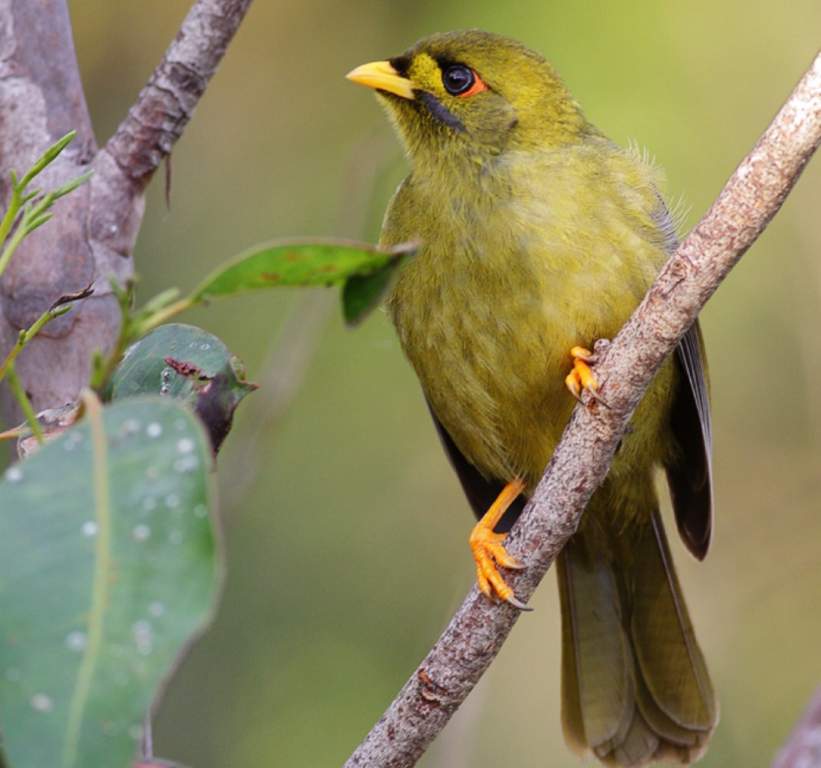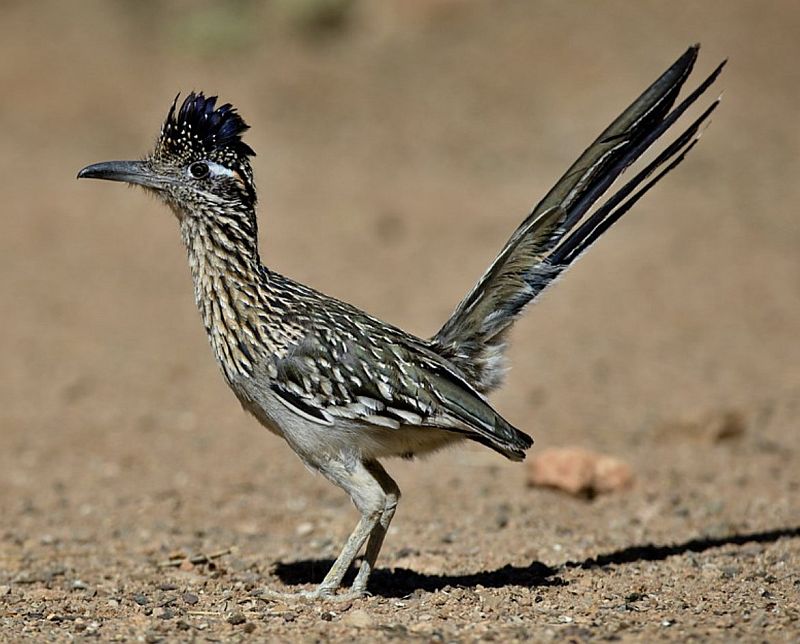Habitat: The loud bell-like sound of the Bell Miner (Manorina melanophrys), inspired much poetry, is a result of the single-plucked notes given by each bird in turn in their close-packed colonies. The purpose of these far-carrying calls seems to be to maintain contact and distance among birds in a group; they are given non-stop throughout the year. Each colony occupies a territory of up to two hectares and comprises several discrete groups of birds, each with a feeding range of as little as 50 meters square but usually more. The groups themselves are made up of a mated pair plus up to eight additional members.
Only the female builds the nest and incubates and broods the young, although the male often escorts her while she is building. Other members of the group also attend the nest, even perching on the rim while she works on material. Later, when the young hatch, they all join in their feeding, often queuing to wait and feeding two nestlings on one visit, then carrying off fecal sacs.
To distract intruders, adults wave their wings and call harshly, then drop suddenly into low undergrowth to repeat the performance. Young fledge erratically and, at first, may return to the nest to sleep. It is huddled in the tops of shrubbery close by; they continue to be fed by all members of the group until about four weeks old and roost together with them in dense shrubbery at night.

Identification: Both sexes are similar; males are slightly larger. The upper parts, from head to rump, are dark olive-green, darkest on the crown. The wings and tail are plain browner olive, and the flight feathers are edged with citrine. The forehead, line over the eye, and malar stripe are dusky black; the lores are light yellow-green; and there is a small patch of bare orange-red skin behind and under the eye. Underparts are uniformly mid-yellow-green. The eyes are mid-brown. The bill and feet are waxy yellow. The immature bird is similar to adults; the eyepatch is olive-yellow for the first three months, changing to orange at six to eight months.
Diet: Bell Miner colonies are sedentary, remaining in the same densely shrubbed gullies in wet eucalypt forests for many years in southeastern Australia. Hopping and fluttering about in the middle strata of the forest, down to the shrubbery, and up into the lower canopy, the birds glean mainly lerps-sap-sucking scale insects on foliage and their protective sugary coating. This connection between the birds and their food has led to their being used as indicators of infested forests. The miners may tolerate other insectivores in the forest under scrubbery but they drive off all foliage-feeding competitors by chasing and mobbing.
Vocalizations: The bell miner call is sharp, repeated jak-jak-jak; complaining Noisy Miner-like chirping kwee-kwee-kwee in aggression. Also, scolding, churring in alarm, and mewing shrieks in distraction display Fledglings beg with repeated soft yeek, yeek, without wingflutter. The bell miner song consists of continual, single-note, metallic, high, bell-like tink or plink, explosive at close quarters and far-carrying, given day-long as position-contact call between members of colonies; varies in pitch between individuals.
Nesting and Breeding: The nesting and breeding occur in July–February and also in April–June. Nest a loosely woven cup of thin twigs, grasses, and shredded bark. The nest is lined with rootlets and occasionally downy seed, bound to branches with cobwebs, suspended by the rim. The nest is sometimes close to the ground, but normally 3-5 meters up in a sapling or tree. Moss, lichen, leaves, insect egg cases, or cocoons are often attached to the exterior.
Eggs: The bird lays two, sometimes, or three eggs; pale pink spotted with chestnut, red, or purple-brown; oval, about 24 x 6 mm. The incubation period is about 15 days for females. Young fledge in 12–15 days. common host to the Pallid Cuckoo.
Distribution: Bell Miner is found in discrete colonies in the edges and gullies of wet and dry sclerophyll forest, usually near water, along the east coast and coastal scarps of the Great Dividing Range, north to near Gympie, Queensland, and southwest to near Melbourne, Victoria.
Races: There are no races.
Other names: It is also known as Bellbird and Bell Mynah.
Size: The bell miner measures 180–190 mm in length
Read More: Little friarbird (Philemon citreogularis)







